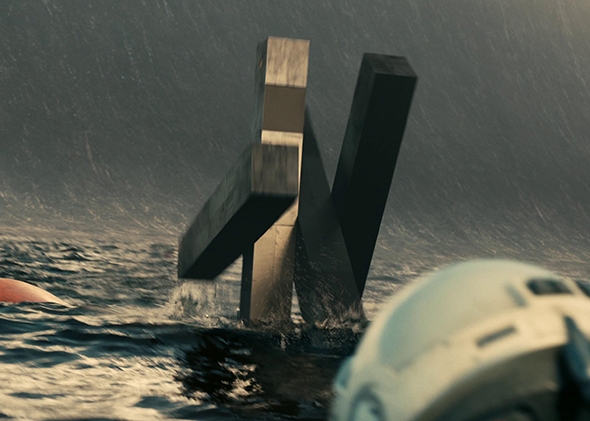The Navigators are interested in all things science-fiction. We are fascinated by time travel, alien encounters, light speed capabilities, cryogenics, cloning debates, post-apocalyptic narratives, and even zombies from time to time. I myself, however, find no other science fiction sub-category as interesting as... robots.
I will likely discuss robots a great deal on this blog. They are the basis of my PhD research and a lot of my scholarly writing deals with their origins, representation, and ontology. Today, I would like to talk about the difference between four terms often used when discussing robots and robotics: robots, androids, cyborgs, and artificial intelligence. There is a common misconception that these objects are interchangeable, however, this is untrue.
TARS from Interstellar is purposefully not given a human body.
Robots:
A robot is entirely mechanical, made only from inorganic material. In addition, robots do not necessarily have the appearance of a human being. For example, in the film Interstellar, the character TARS is a robot, however, he does not have a human-shaped body. This differentiates him from the other crew members, and makes it easier for them to treat the object like a piece of machinery with a specific purpose.
Metropolis (1927) was one of the first depictions of an android on film.
Androids:
Androids, however, are, by definition, robots that hold the representative appearance of a human being. Robots can be seen throughout film history. Perhaps most famously in the 1927 film Metropolis, as well as Star Wars (3CPO), and even comedies like Short Circuit. Note that Star Wars has paired both an android (3CPO) and a robot (R2D2) together for maximum comic effect!
Cyborgs:
Conversely, cyborgs are a literal blending of human and machine—a combination of both organic human flesh, that has come to use, depend upon, and integrate mechanical or cybernetic elements into its body. Perhaps the most famous cyborg is the dreaded Darth Vader (again, from Star Wars.) Donna Haraway's famous work, The Cyborg Manifesto discusses the blending of the human and the machine as the next step in human evolution, and the true path towards an entirely non-binary system of gender identity. The article is available online at: http://faculty.georgetown.edu/irvinem/theory/Haraway-CyborgManifesto-1.pdf
Hal from 2001 is a perfect example of a villainous, disembodied A.I.
A.I.
Of the four, A.I. may be perhaps the most discussed in the current social climate, as we all the most interesting. A.I. distinguishes itself from the other conceptual objects listed through its ability to learn. While Robots, Androids were first invented as “mass produced slave labor” in Karel Capek’s famous play R.U.R., A.I., historically, cannot be thus manipulated. A.I. are able to grow beyond their creators, and have recently been portrayed in the cinema as inherently dangerous.
Another interesting aspect of A.I. is the lack of embodiment as an ontological necessity. Well known A.I. such as Samantha in Her, Hal from 2001: A Space Odyssey, Jarvis from the Marvel franchise, or even Skynet in the Terminator films prove that A.I. do not need physical bodies to learn, grow, and achieve their goals. Physical embodiment is, however necessary for robots, androids, and cyborgs.
Drop the Navigators a line under the Contact Us tab if you are interested in learning more about robots, androids, cyborgs and A.I. We are always looking for new and interesting ideas to discuss on the blog!
Nerdfully yours,
Dr. Bella



